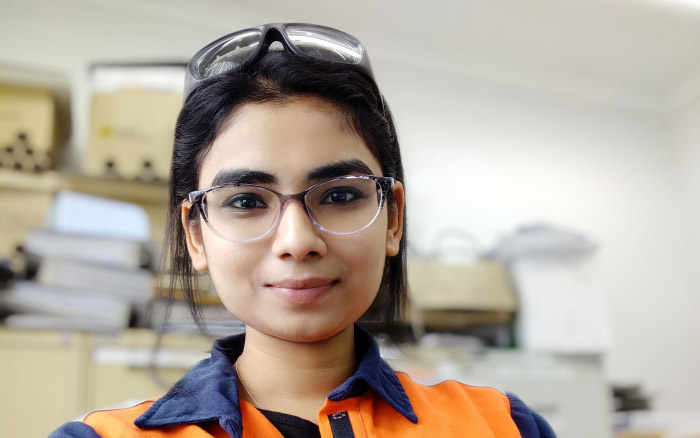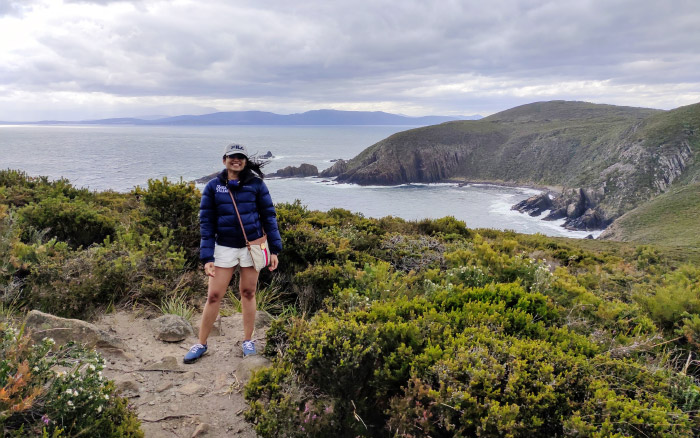Kamya’s chemical engineering internship at Rio Tinto in Tasmania
By Kamya Mehta, Master of Engineering (Chemical with Business)
When I applied for my Master of Engineering (Chemical with Business), my aim was to drive innovation – something that I felt required technical and financial skills at the same time. I also always wanted to have an industry experience while I was still at university, an experience I was lucky enough to have during my last summer vacation, working at Rio Tinto – Bell Bay Aluminium in Tasmania and travelling around on the weekends.

Kamya Mehta
When applying for a not for credit internship, I made sure that my resume reflected myself and my expectations from the internship. The University workshops helped me a lot with framing up my resume. I was ultimately successful in gaining an internship at Rio Tinto, where I worked as a Process Engineer in the smelter.
Starting my internship at Rio Tinto was intimidating in the beginning. Within seven months of arriving in Melbourne from India, I had re-packed my bags and shifted to Tasmania. Travelling to and from work, cooking, managing time and meeting deadlines all at the same time could be tedious but I’d always wanted to have this experience before I finished university.
During my internship, my role involved working with a team to put together a live model to predict electrolyte levels in the cells.
My day generally started with a technical meeting where we discussed safety issues and troubleshooting, after which I would start working on my planned tasks, meetings and projects. I was taught about hydration programs (essential when working in an environment where the temperatures would go up to 60 degrees Celsius) and how eight and a half hours of sleep was important and compulsory to function well. It was a rollercoaster – from asking people to give me a bit of their time, carrying out experiments on the site, working near the furnaces, wearing protective equipment and managing my time.

The first advice I received from my supervisor was, you need not know everything, you only need to know the people who can help you do it.
I took this to heart and began asking questions to everyone involved in the process. Funnily enough, it took me around 50 days to fully understand my project scope – it’s difficult to start from zero, know everything about the process, figure out what’s wrong and then finally think about how to fix it.
My colleagues told me that the project I was working on was taken up by a specialist about seven years ago who left it unfinished and unsolved. I made up my mind in the beginning that I would find the solution to this ‘mystery’ before leaving, and I was able to!
This internship instilled just the right amount of confidence in me. I learnt how to juggle multiple projects at a time, how to make people feel a part of my project and most importantly what gratitude meant. I have a different outlook toward process safety, the smelting industry and the technicalities involved in this process after my internship.
I had the opportunity to interact with so many people daily, everywhere from technical meetings to social gatherings. I met the other interns spread through various departments, interns who like me had travelled from their home states for this opportunity. On day 80, my supervisor remarked, “you on day one and today are two different people”. This sentence summed up my journey and has opened new doors for my future.
My advice to other students would be to put in the effort and find yourself an internship, and use all the resources around you provided by the University. Put in the work, and there’ll be no stopping you!

Related topics